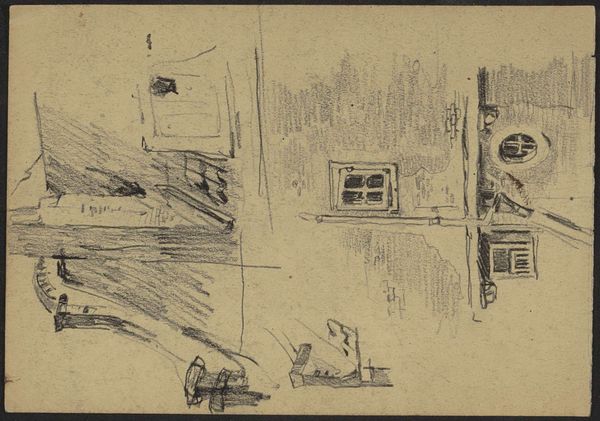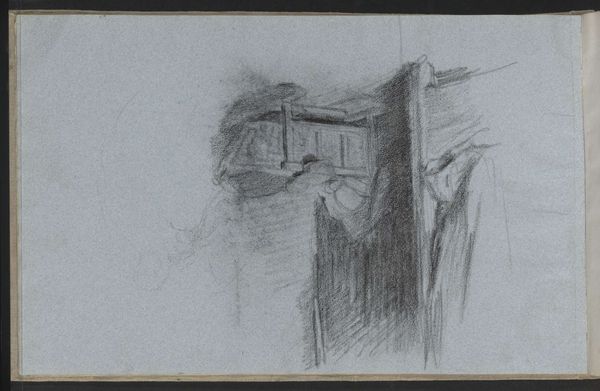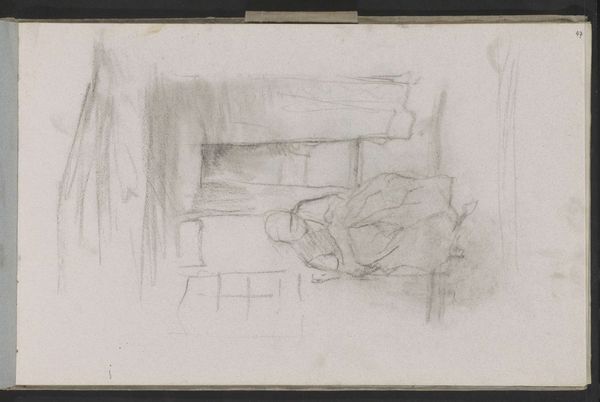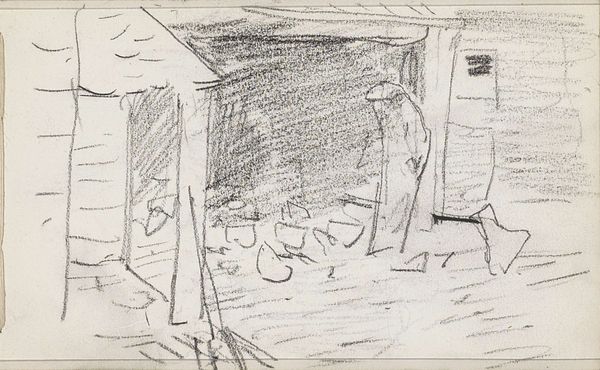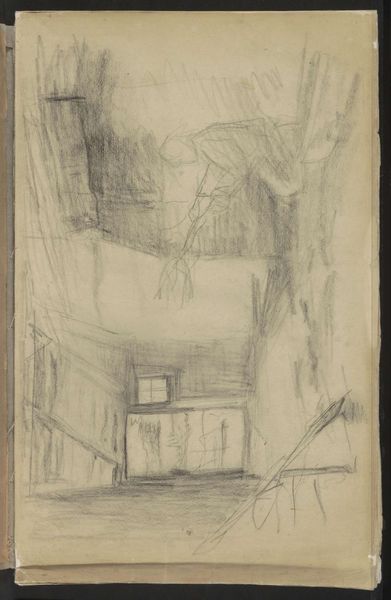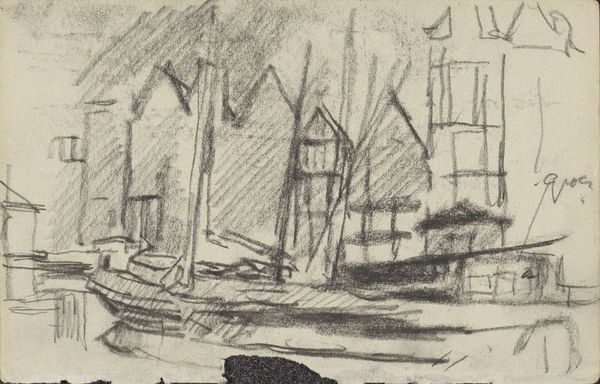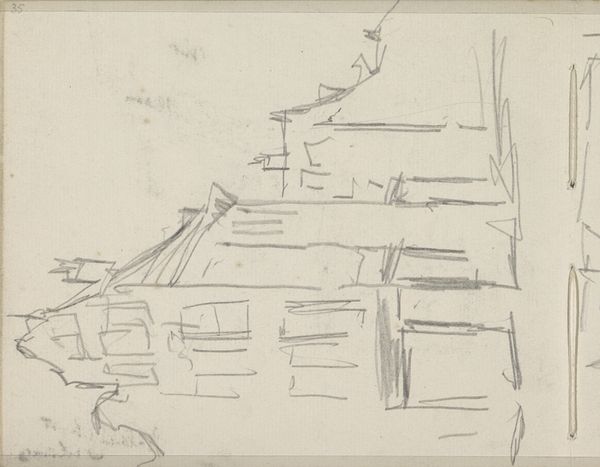
Gezicht op de achterkant van de huizen aan de Zeedijk in Amsterdam, gezien vanaf de Oudezijds Achterburgwal before 1906
0:00
0:00
drawing, pencil
#
drawing
#
landscape
#
pencil
#
realism
Dimensions: height 140 mm, width 201 mm
Copyright: Rijks Museum: Open Domain
Curator: So, here we have Willem Witsen's "View of the Back of Houses on the Zeedijk in Amsterdam, Seen from the Oudezijds Achterburgwal," a pencil drawing from before 1906. Editor: Wow, it’s… bleaker than I expected. Kind of a somber snapshot. There’s a heavy stillness in the grey tones. The details are smudged and the forms look as if about to evaporate... the very feeling of abandonment. Curator: Witsen had a knack for finding the poetic in the mundane. He often depicted Amsterdam, but he frequently focused on the quiet, unseen corners of the city rather than the grand boulevards. What you're feeling—that melancholic atmosphere—is partly due to the work's commitment to Realism. It’s this pursuit of truth, this stripping away of romantic idealization, that makes it so compelling, don’t you think? Editor: Yes, it has the spirit of documentary, sure, but it is also more intimate, personal. It doesn't present some general or even recognizable face of Amsterdam life; instead, it speaks quietly about a kind of decay and lost beauty, focusing on textures and worn surfaces. Did he draw on-site? It feels like the quick hand of a city sketch. Curator: He worked both on site and in his studio. The visible stroke quality shows the immediacy, I would assume that this pencil drawing was executed quickly capturing that fleeting atmospheric and lighting. Beyond this, I am fascinated how such subjects became legitimate artistic subject matter... Realism certainly contributed to this freedom. Editor: This artistic acceptance meant looking life directly in the face without the pretty masks… revealing vulnerability and authentic decay as aesthetic worth. And the smallness of scale creates a surprising closeness. What's especially touching about it, paradoxically, is it reminds me of how something that's neglected still possesses its distinct kind of presence. Curator: Exactly! It’s the overlooked and dismissed aspects of city life rendered with empathy. Witsen grants value to what many would deem valueless, revealing its own quiet beauty. It resonates strongly, offering a reminder of seeing significance and beauty everywhere. Editor: Beautifully said. The beauty is precisely this presence we almost miss because it whispers quietly, not shouting but breathing subtly from behind the back of those houses, where the magic almost always is.
Comments
No comments
Be the first to comment and join the conversation on the ultimate creative platform.



